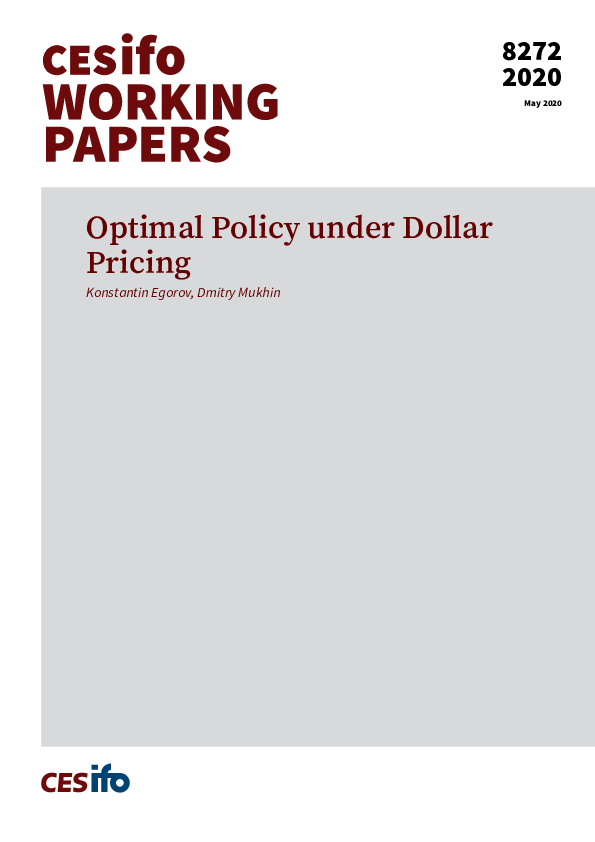Optimal Policy under Dollar Pricing
CESifo, Munich, 2020
CESifo Working Paper No. 8272

Recent empirical evidence shows that most international prices are sticky in dollars. This paper studies the optimal policy implications of this fact in the context of an open economy model, allowing for an arbitrary structure of asset markets, general preferences and technologies, time-or state-dependent price setting, a rich set of shocks, and endogenous currency choice. We show that although monetary policy is less efficient and cannot implement the flexible-price allocation, inflation targeting remains robustly optimal in non-U.S. economies. The implementation of this non-cooperative policy results in a “global monetary cycle” with other countries partially pegging their exchange rates to the dollar and importing the monetary stance of the U.S. In spite of the aggregate demand externality, capital controls cannot unilaterally improve the allocation and are useful only when coordinated across countries. The optimal U.S. policy, on the other hand, deviates from inflation targeting to take advantage of its effects on global product and asset markets, generating negative spillovers on the rest of the world. International cooperation benefits other countries by improving global demand for dollar-invoiced goods, but may be hard to sustain because it is not in the self-interest of the U.S. At the same time, countries can still gain from local forms of policy coordination — such as forming a currency union like the Eurozone.
Monetary Policy and International Finance